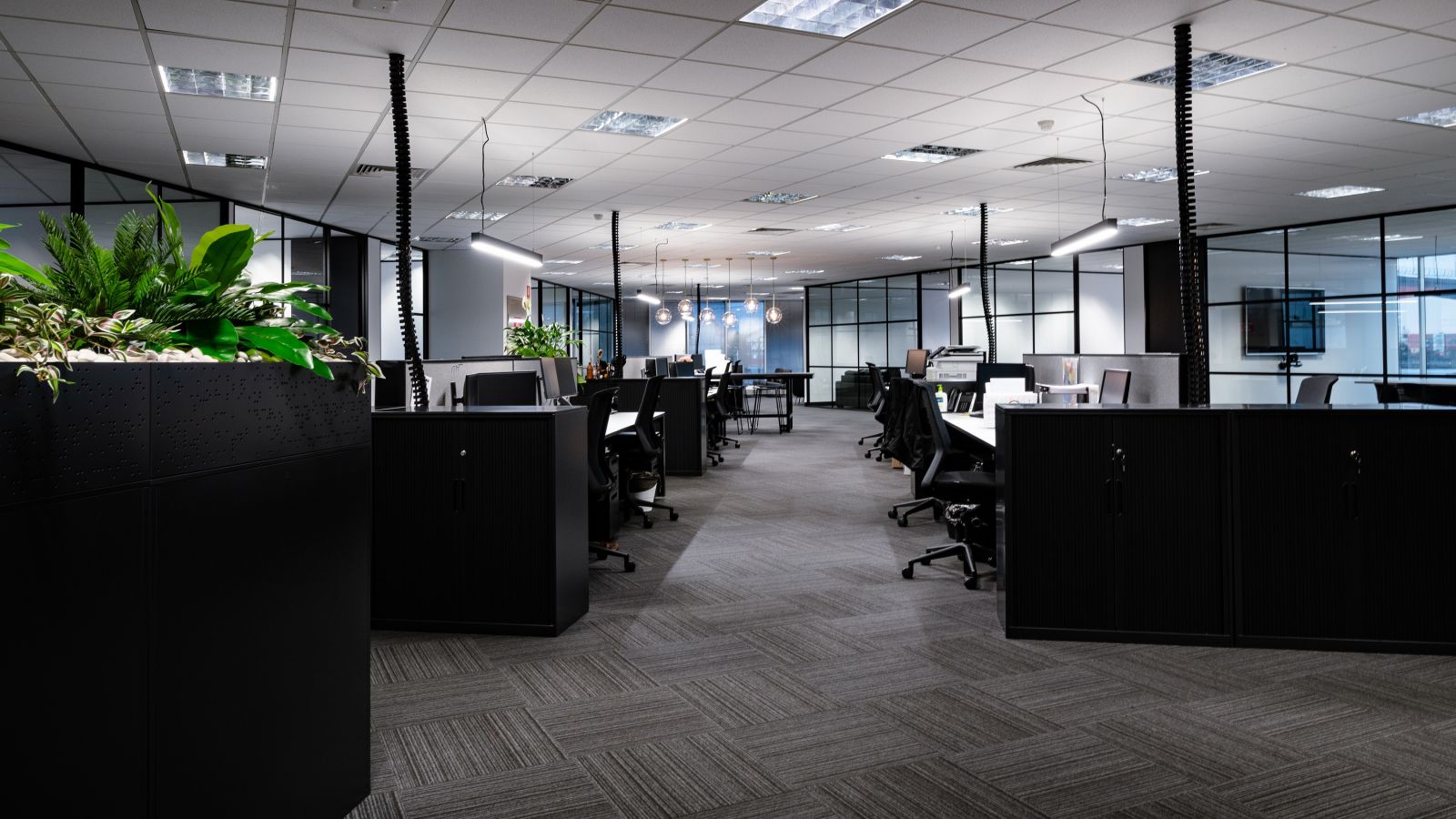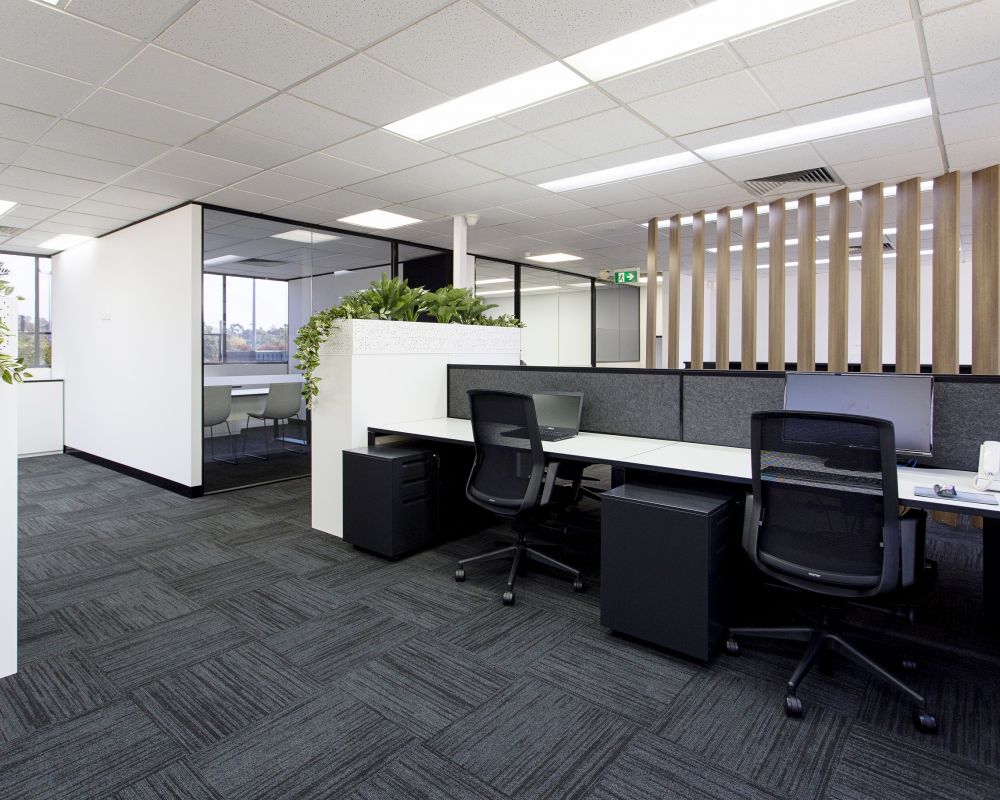7 Simple Ways To Keep Your Office Fitout Affordable

Karl Simity
What does your dream office fitout look like? Big boardroom, expansive open plan workstations, oversize executive suite –the list could go on and on. Well, until all the budget-conscious factors weigh into the equation.
If you're anything like most business managers, your focus is typically spent on finding an affordable office fitout solution that solely meets your needs – and not a whole lot more than that.
But what if there was a way to create and customise that perfect workspace with an affordable office fitout? Sounds too good to be true? It doesn't have to be.
By being smart with budget, and specific on function, there are several ways to minimise costs without compromising on what you want to achieve – rendering a budget solution to your purpose-built office fitout.
Remember, affordable doesn't mean uninspiring. You spend more time in your office than in your living room; hence it needs to feel comfortable, focused and productive. And below, we discuss 7 simple ways to drive your dollar further in planning out your next affordable office fitout.

1. Understand Budgeting For Your Office Fitout
When budgeting for a relocation, renovation or office upgrades, you must first consider the total cost of your office fitout.
Fitouts can be a costly investment, and a large amount of the project costs can be spent on items that you may not consider.
Even before you begin the process, it's vital to understand all the elements involved in delivering an affordable fitout –from start to finish.
Most of your project costs will fall into three main categories:
1. Furniture or soft finishes
Items like desks, workstations, chairs will consume about 40% of your total budget.
2. Hard construction
Fabricating office cubicles and meeting rooms will utilise roughly 30% of your total budget.
3. Services
These are things you may not even think of, like; air conditioning, fire protection, data connections, permits and planning. These costs can quickly rise, so it's best to set aside around 30% of your fitout budget for these hidden services.
2. Choose The Right Office Site
When a third of your total fitout budget can be spent on items that aren't accounted for, it makes site selection critical to ensure you keep costs down.
Producing an affordable fitout means finding a site that needs few changes, though assessing any new location can also prove to be complex.
While some properties can look appealing from the outset and appear to have all the necessary services in place, it's imperative to look further into some of the critical high-cost components.
For example, if you're a business looking for a new space and find an office that looks great and has a large existing boardroom that fits 14 people. This could be a fantastic solution as you have large meetings twice a week and this room would be perfect, right? Perhaps not. As no two businesses are the same.
This meeting room may have been designed for a business that only had short meetings in that boardroom. And the room may not have sufficient air conditioning or power supplies needed to charge laptops. It also might lack data presenting abilities. Can you understand the predicament?
You may have been better off custom-building a boardroom from scratch in a different location, where there was already an adequate amount of services. The lesson here is to engage with someone early in the process to help you select a site to make your affordable fitout a reality.
3. Gather The Right Questions To Ask
In planning for any office fitout, it's essential first to assess your legitimate requirements versus the perceived needs, as things immediately become clearer.
Start with asking yourself:
- What sort of space do you need?
- How much space do you need?
- How many offices do you (really) need?
- What location should your office be in?
- What furniture will you keep, and what will you replace?
- What does your dream office look like?
These answers will generate some form of blueprint, indicating the type of site to be looking for. Because when shopping around for potential office sites, you must consider reducing your floor plate while balancing business growth.
And always ask for an expert to help you and complete site inspections before committing to any space, a builder, for example who can help quote any additional costs on alterations or necessary repairs.
By using all the resources available to you, you'll in turn reduce the risk of overspending and help you stay within your budget, before you've even started the fitout. By starting on the right foot, you'll ensure you've settled on a property that will fit your business, and keep your workspace affordable.

4. Communicate With Your New Landlord
Ensure you negotiate good terms with your landlord, and that they fully understand your position and you understand theirs. This gives you every chance to establish a strong working relationship right from the beginning.
After all, there is much incentive in the value your fitout may bring to their property.
By negotiating lease terms and commencement dates with early access, you may not have to pay rent while waiting for your fitout to be completed.
It's also important to have a fitout plan and insert that in your lease, safeguarding against any landlord objection for upcoming works after you've signed.
5. Weigh Up Soft Furnishing vs. Hard Fixtures
Opting for soft furnishings like decor and furniture are enticing, and can elevate the finishing touches to any workspace – making any office feel inviting and comfortable. However, these items can usually be expensive and commonly don't offer a lot of function to your operation, particularly not upfront.
When producing any fitout on a budget, first consider spending the funds you have on fixed items and more complex components like; extra meeting rooms, additional workstations, and other day-to-day necessities that are purposeful and required as a focus of your fitout. This type of practical thinking will save money in the long run.
There's always time to add more furniture and soft furnishings, but facilitating any building works when you obtain the premises is the proper order to follow. Later down the track, building upgrades become a significant disruption for your workplace, not to mention repeating applications and payments for permits.
6. Assess What You Already Own
This might sound like a no-brainer, but when 40% of the cost of a fitout is loose furniture and workstations, it makes a lot of sense to review what you may already have.
You might be able to reuse and repurpose various elements from your existing office, saving the fixed budget for the things you don't yet own.
Explore all additional options before simply opting to make grand purchases on new items. Seeking out secondhand furniture options or acquiring from other businesses that may be clearing out disused office components can be a simple, cost-effective solution.

7. Discover New Cost-Saving Alternatives
Your existing data system or IT cabling may have a little outdated. Moving premises should inspire you to look into new ways of network communication, as traditional thinking often relied on twice the amount of fixed infrastructure and cabling.
In the past, you may have needed one set of cabling for your phone and one for your network – these days, it's far more integrated.
Now in the ages of VOIP handsets and Zoom, the need for traditional cabling has been reduced by half, which subsequently can halve your cabling costs.
You can also add to this saving by investing in new software for your IT systems. Items like fixed HDMI cables are no longer required to display content on TV screens, as compact pieces of technology like Apple TV and Google Chromecast can now save you hundreds of dollars on fixed, wired infrastructure.
BONUS: Change Tactic, Not Strategy
You've got every intention of making the right choice at every turn. But when shopping around for solutions, it's easy to be overwhelmed by choice.
Communicate openly and honestly with suppliers when seeking out answers. The more upfront you can be, the better you can be served. And the more objective you can remain about the process.
You know what you're trying to achieve. So getting multiple prices for a single item is a great way to prevent suppliers from considering their own solutions in the process.
And more often than not, it's better to work with a supplier to find a suitable alternative rather than simply trying to negotiate better rates. Opt to ask for advice before asking for a discount.

A Final Word On Fitouts
Creating a fitout on a budget is achievable, yet will require more initial research than you might think. It's imperative to start exploring the idea of your office purpose, and from their seeking the sort of space you need to achieve that.
As you look into the future of your business, you can start planning for that directly, and most importantly, ensure you're getting the right advice upfront from qualified people to help make the process a whole lot easier – and affordable.



